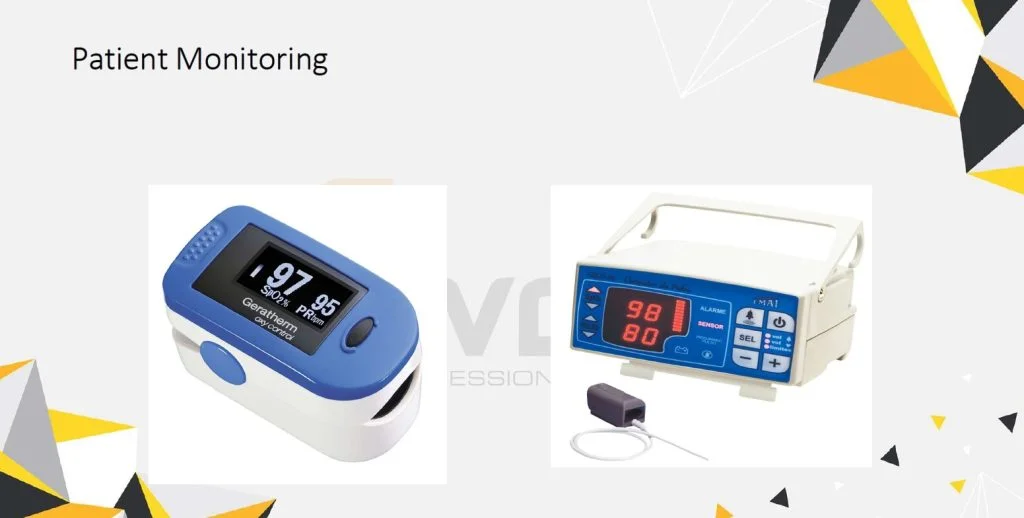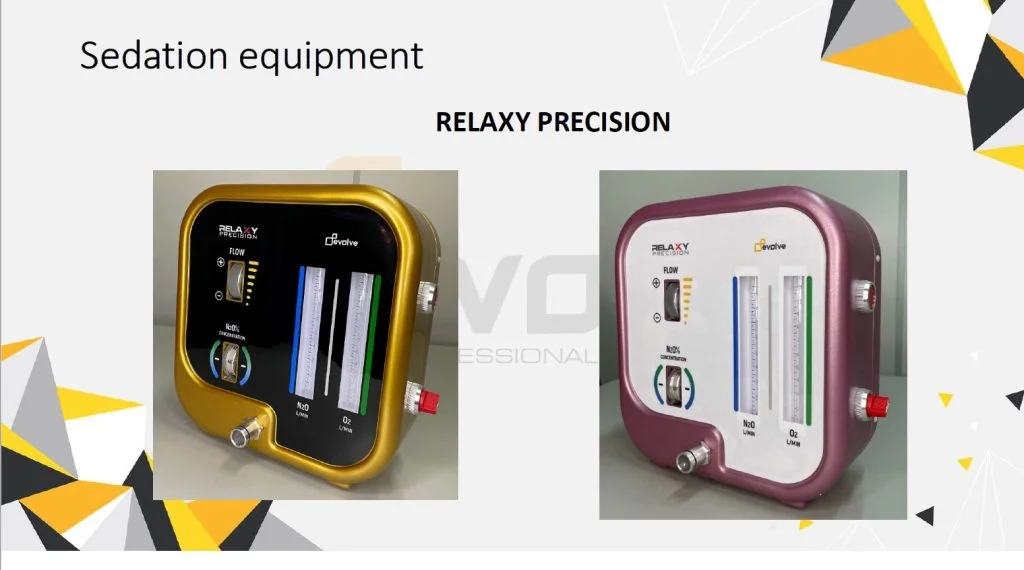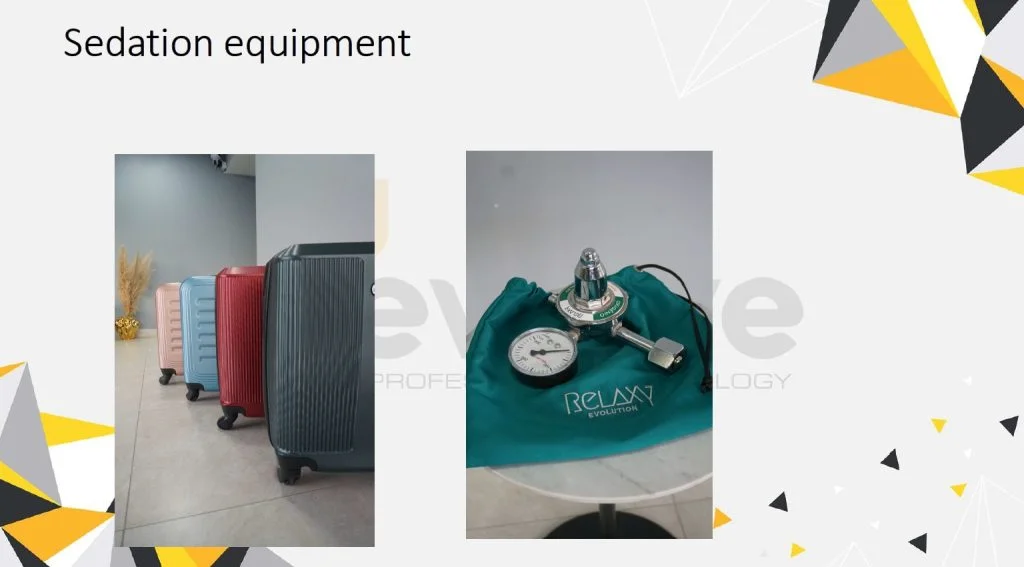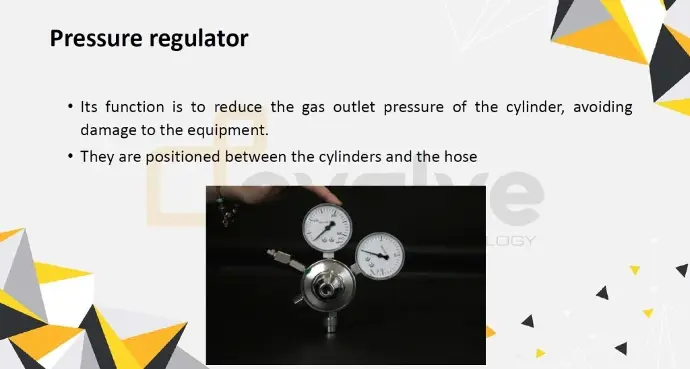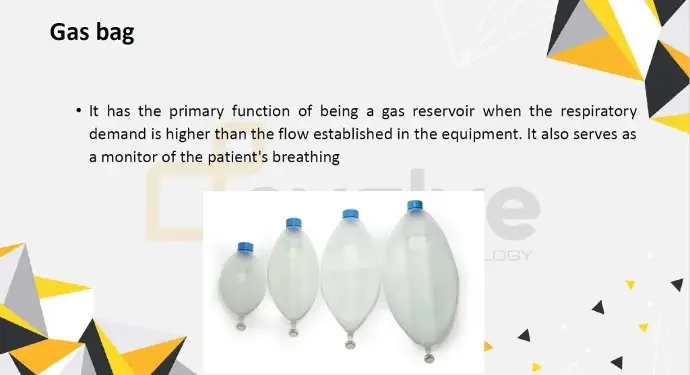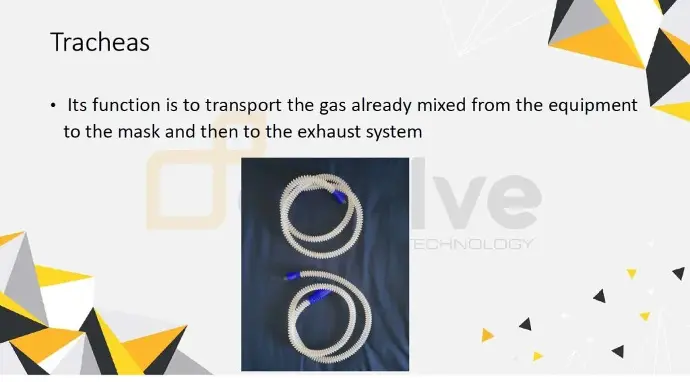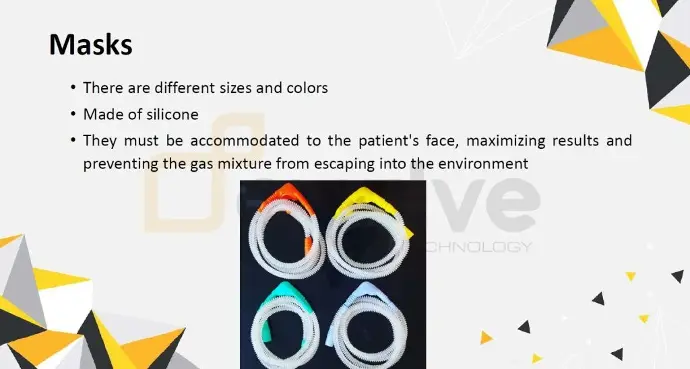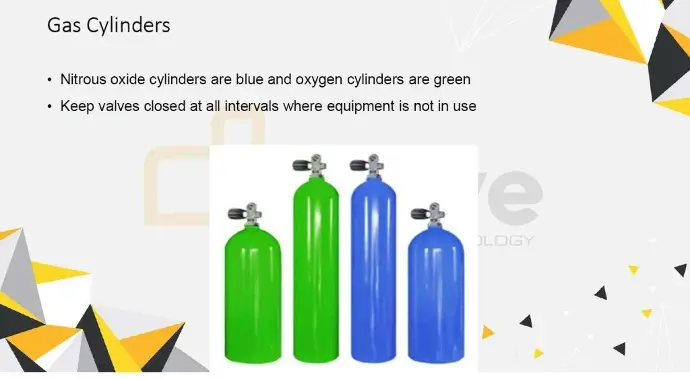DRA CRISTIANE GIORDANO
CONSCIOUS SEDATION WITH NITROUS OXIDE
Definition of The Technique:
It is a method developed to produce analgesia and increase the patient's pain threshold, while also reducing fear and anxiety during treatment. This is achieved by inhaling a mixture of nitrous oxide and oxygen in different proportions.
Definition of the Technique by Dr. Cristiane Giordano:
Conscious Sedation is defined as a controlled state of depression of the Central Nervous System with reduced anxiety. This allows the patient to maintain protective reflexes, the ability to sustain independent airways, and respond to verbal commands.
Nitrous Oxide:
The success of the inhaled sedation technique is attributed, among other factors, to its efficacy, the low risk to the patient, and the absence of side effects. It may be indicated when other drugs are contraindicated and always provides at least 30% oxygen.
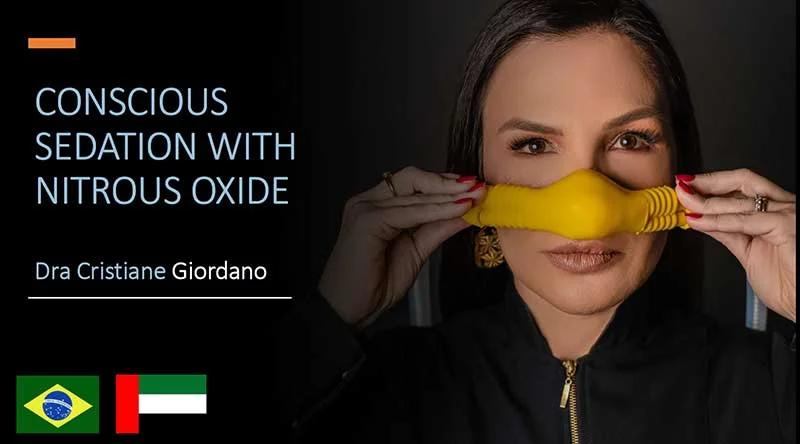
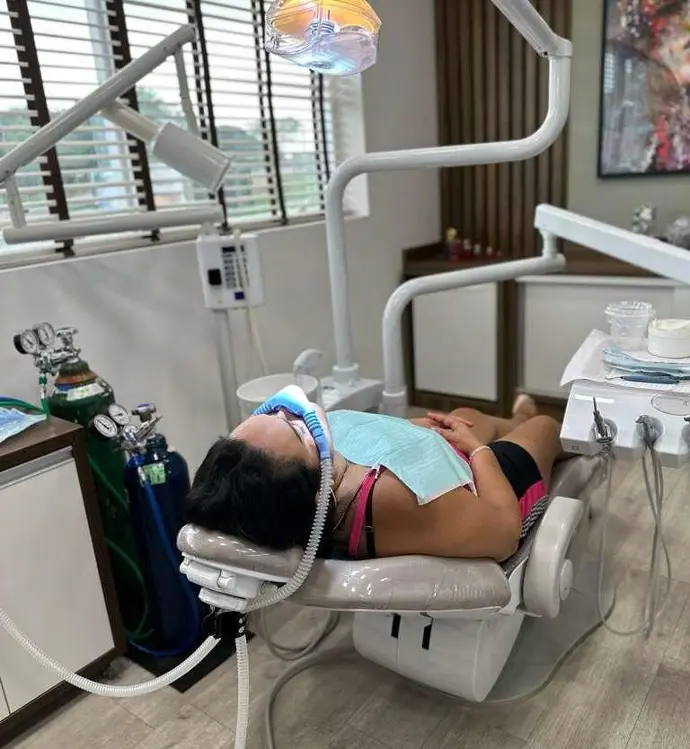
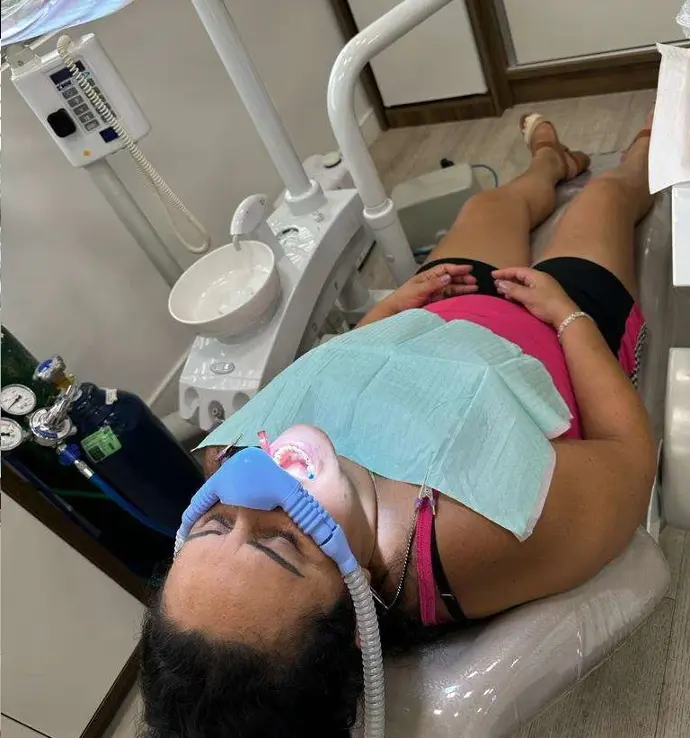


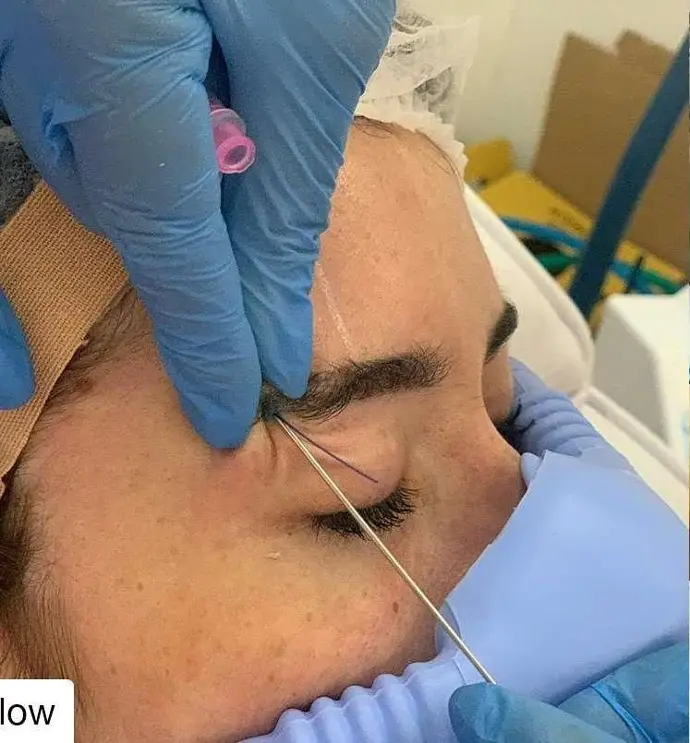
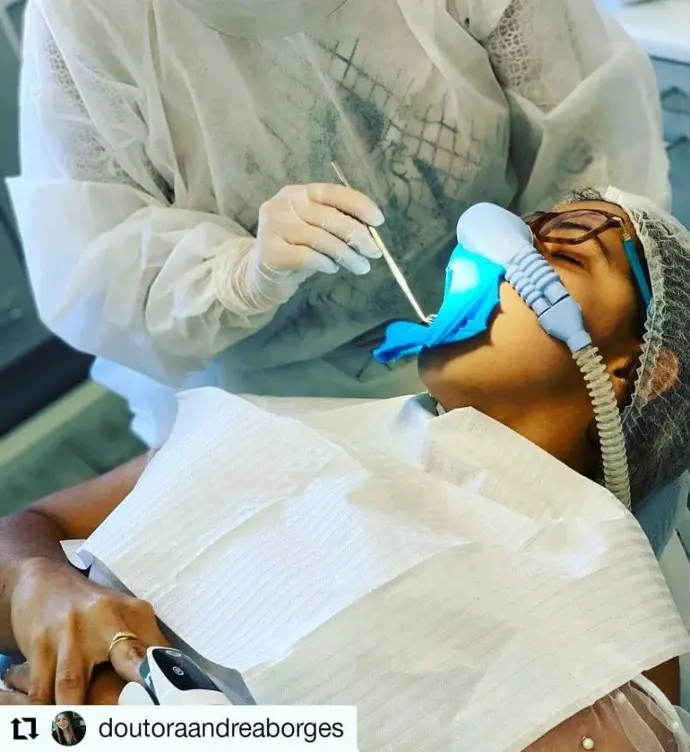
Sedated Patient
- feeling of numbness in the feet and hands
- Tingling sensation in the lips, tongue and oral mucosa.
- Eyes close.
- Subtle smile
- calm tone of voice
Sedated Patient
- body relaxation
- Reduction or disappearance of anxiety and fear.
- decreased hearing
- Feeling of “heavy body”.
- Change in pain threshold at periosteal level

Sedated Patient
A study conducted by Ranali (2002) concluded that sedation with nitrous oxide makes the anesthetic injection painless and atraumatic for the patient.
Oversedated Patient
- feeling of being floating
- Exaggerated and uncontrolled laughter
- little nausea
Oversedated Patient
- Severe nausea.
- Possibility of vomiting
- Severe nausea.
- Possibility of vomiting
Average Sedation Levels
- Percentage of patients:
- 70% – between 30 e 40% of N2O
- 12% – under 30% of N2O
- 18% – over 40% of N2O
FASTING x NITROUS OXIDE
- The patient should not be fasting. He should have a light feeding 2 hours before
treatment - Fasting favors motion sickness during sedation.
Security
- More than 170 years (1845 – 2018) of medical use with no reports of deaths.
- Scientific work carried out by Danish dentists who used more than 1 million hours of sedation without any case of severe intercurrence (RUBEN, 1972).
- Sedation with nitrous oxide is considered the safest method in use.
Security
- It does NOT cause chemical dependency
(CRAWFORD, 1990, MALAMED, 1995, CLARK & BRUNICK, 1999, YAGIELA, 2000,
GERHARD, 2001, LUHMMAN, 2001, MALAMED, 2003, HOUPT, 2004, CLARK &
BRUNICK, 2003)
Contraindications
Most patients can benefit from the technique
- But we have to be careful with patients with certain chronic lung diseases. (HATAYAMA et al, 1992)
- In pregnancy there is no absolute contraindication to the use of sedation from the second trimester. However, as a safety measure, its use should be avoided (CLARK & BRUNICK, 2003)
- Mouth breathers
Some indications • Hypertension: as N2O has anxiety control properties, its use is indicated for these patients in order to avoid hypertension peaks • Asthmatics: Nitrous oxide has bronchodilator properties and is not harmful to the pulmonary epithelium (MALAMED, 2003, CLARK & BRUNICK, 2003) • Heart disease: SAITO, Fujita, et al, 1990, treated 160 patients with special needs and heart diseases monitored with electrocardiograms and concluded that sedation is safe, effective and appropriate. AMEY et al, 1981, indicates conscious sedation in the care of patients with acute myocardial infarction due to its analgesic and anxiety-reducing effect.
Action
- CARDIOVASCULAR SYSTEM : There is no change in heart rate related to N2O
- RESPIRATORY SYSTEM : It is not harmful to the pulmonary epithelium. For this reason, it can be given to patients with asthma without any risk of bronchospasm
- DIGESTIVE SYSTEM : It has no actions on the digestive tract. In the presence of liver dysfunction, N2O can be used without risk of overdose or adverse reaction
Technique of use
1- Establish a flow of 5 L/min of 100% oxygen and position the nasal mask on the patient. Ask him to breathe only through his nose.
2- keep the patient breathing only oxygen for 1 minute
3- Start the administration of nitrous oxide at a concentration of 20%. Technique of use
4- Gradually the concentration of nitrous oxide is increased from 10 to 10% every 60 seconds, until the ideal level of sedation is reached
5- Start treatment .
6- Remove nitrous oxide from the mixture and maintain 100% oxygen for 3 to 5 minutes (MILLER, 2000, MALAMED, 2003, CLARK & BRUNICK, 2003, MANICA, 2004)
7- Dismiss the patient.
